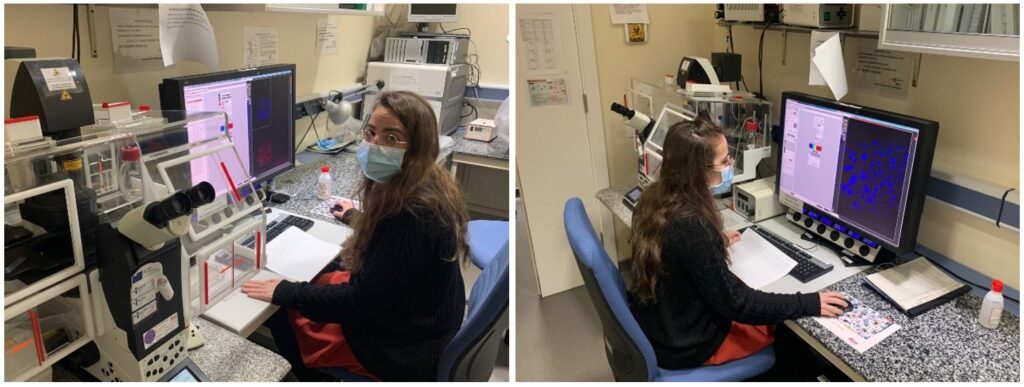BLoC is a European Project that brings together different academic and industrial partners to improve a new technology that integrates tissue engineering and magnetic resonance spectroscopy using dynamic nuclear polarisation (DNP-MR), to monitor diabetes and liver diseases.
Dr. Samantha Morón is a biochemist from Barcelona with a solid experience in immunology and metabolic diseases. After finishing her PhD, where she studied organ’s reaction to thermogenic response and obesity, she joined the group of Dr. Anna Novials from IDIBAPS to perform a postdoctoral research in the frame of BLOC. Her knowledge and skills are key to the success of the project!

Can you describe yourself in a couple of lines?
My name is Samantha Morón Ros and I am from Barcelona. I have studied a BSc in Biochemistry and an official master’s degree in biomedicine, both in the University of Barcelona. I participated during these years with a research group focused in immunology and the role of macrophages in the immune response. After that I started my PhD in the Molecular Metabolism and Disease’s group led by Francesc Villarroya where I studied the response of different organs to thermogenic response and obesity and the effect of some fibroblast growth factors, such as FGF15/19. After I finished my PhD in 2020, I joined the research group “Pathogenesis and Prevention of Diabetes” led by Anna Novials as a postdoctoral researcher.
What is your role/position within BLOC?
Due to my experience in animal models and my background as a researcher in metabolic diseases, my role as a postdoctoral scientist is to evaluate the beta cell function in in vivo mice models and to support the validation of DNP-NMR measurements.
Could you tell us a little bit about the concrete work you are involved in inside BLOC project?
As my other colleagues have answered before, one of the main challenges of this project is to develop bioengineered organs compatible with the DNP-NMR technique. Moreover, the study of the crosstalk between different bioengineered organs is a goal of the BLOC project as well. Right now, I’m working on in vivo experiments evaluating diabetes, obesity and fatty liver mouse models with the objective to evaluate DNP-NMR measurements. On the other hand, I’m working on in vitro engineered models of pancreatic islets to use them with engineered liver for NMR studies.
What are the expected results?
To validate the results, we obtain with DNP-NMR technique, we need a reliable model of the organs we want to evaluate. We expect to have a physiologically accurate pancreatic and liver model compatible with DNP-NMR technique. When we have these models, we will have reliable models for studying human metabolic diseases with this promising technology.
How do you feel about being a part of this European Project?
As a biomedical researcher, being part of such a multidisciplinary project with professionals from different parts of Europe is very exciting. All the researchers involved in this BLOC project are helping each other. Also, I was always working in projects focused on biochemistry or biomedicine. Participating in the BLOC, which combines the biomedicine but also the technology (with the NMR) is very interesting and I am learning a lot from my colleagues.
The other members of the BLOC Consortium are: IBEC, Oxford Instruments and Multiwave Technologies.
If you want to know more about the project and the other partners, check the BLOC project webpage.